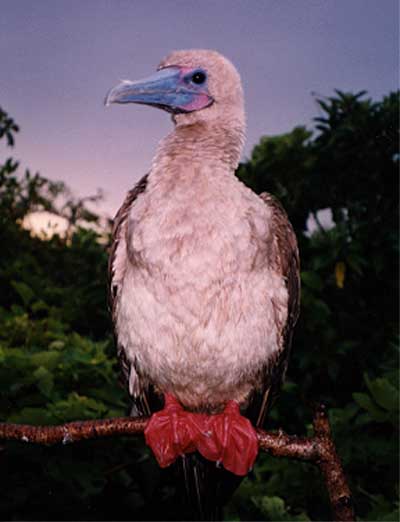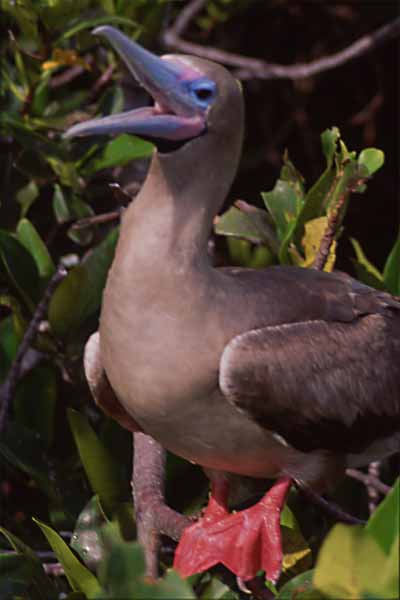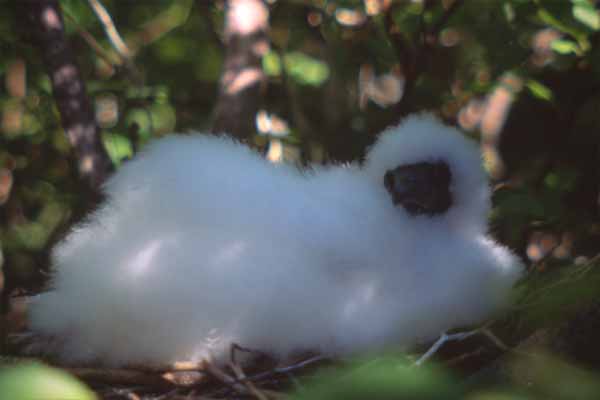The red-footed booby (Sula sula) is the smallest of the booby species and arguably the weirdest. Its
bright lipstick-colored feet are attached to a body of rather dull white with pale brown wings. The feet serve a
role in courtship, being waved in front of prospective mates — imagine someone with a pair of Elton John
platform boots and you get the idea. The function of the blue bill is still being debated. The bill has small
saw-toothed ridges along its inner length, presumably to help grasp its slippery prey: squid and fish. This bird
has large eyes because it feeds at night, although it is active also during the day.
Why is the red-footed booby the smallest species in its family? Perhaps because it has to fly further than the
others to get food. However, it is also the only booby species that nests in trees, and it would not be helpful
to be too heavy while clambering among the branches — something at which they are not very skilled!
Curiously, this species has two color phases, the normal brown phase and the rare white or pale phase. The pale
phase is colored much like a masked booby, with whitish upper parts and coverts, but dark black primaries. If
you see a "masked booby" in a tree, you know it's the pale phase red-footed booby. Also the red-foot
is smaller and retains its bluish bill, and red feet. In practice, the white phases I observed tended to have
orange or brownish feet compared to the brown phase pictured here.
Although it is the most numerous of the three Galapagos species most of the red-footed booby's time is spent
over open ocean where it feeds so they are not seen very often. They are only seen near the coast when returning
from or departing on feeding forays. The impression of scarcity disappears on Tower Island in the northeast of
the Galapagos archipelago which is the species' main stronghold. Here is the world's largest colony of
red-footed boobies — estimated around 100,000 pairs. The Galapagos population of red-footed boobies is
considered to be an endemic subspecies (Sula sula websteri).
All the pictures on this page were taken on
Tower Island
To learn more, see red-footed booby natural history information and
Boobies—general information
|





